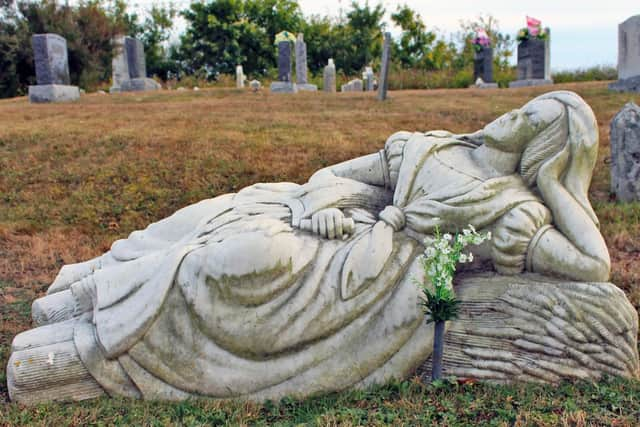The Marble Lady: Read the haunting love story behind this Glaswegian woman’s grave on the eastern shores of Canada
and live on Freeview channel 276
On the eastern shores of Canada, in an assuming graveyard in Nova Scotia, lies the Marble Lady - a Glaswegian woman who met her fate thousands of miles from her home.
Margaret Lindsay McNaught Webster was born right here in Glasgow back in 1819, but her headstone lies nearly 3000 miles across the ocean.
Advertisement
Hide AdAdvertisement
Hide AdThe headstone is seen as an artistic treasure in Canada. Particularly treasured for it’s location, lying in a fairly unassuming & modest graveyard in a small town on the shores of the North Atlantic ocean. The Marble Lady is striking in person - almost glowing white amidst the small cemetery lined with humble grey headstones.
Margaret was buried at the Town Point Cemetery in Chebogue - the location where the first Enlish-speaking settlers arrived in Yarmouth on June 9, 1761. A relative new-comer to the Americas, Margaret is buried amongst many of the original members of the founding families of Nova Scotia, or New Scotland in English.
Based off an image from a matchbox, the statue depicts Margaret Lindsay McNaught Webster resting on a sheaf of wheat with sickle in hand.
Unlike the rest of the headstones battered by the coastal weather, the Marble Lady lies almost unaffected, shining a pristine white overlooking a dark grey sea.
Advertisement
Hide AdAdvertisement
Hide Ad

But how did Margaret end up in Yarmouth, Canada?
It’s said that when Margaret met the man she would spend the rest of her life with, it was love at first sight on both accounts.
Her suitor was a native Nova-Scotian studying medicine at the University of Glasgow, one Dr. Frederick Augustus Webster, who first glimpsed the woman that would become the Marble Lady lying in a field in Glasgow.
Locals of Yarmouth will tell you that the sun shining upon Margaret at that moment foreshadowed her later depiction in resplendent marble. Locals in Glasgow would tell you that the sun shining in Glasgow is a fairytale in and of itself.
Instantly smitten, Dr Webster would spend the rest of his time studying medicine at Glasgow with Margaret, before the pair got married at the Glaswegians lavish estate in Glasgow, before the pair would emigrate back to Webster’s home in Canada.
Advertisement
Hide AdAdvertisement
Hide AdThey would spend the rest of their days together in Yarmouth - living a life of contentment in North America. The pair would live in bliss for 20 years - before an untimely and unknown illness would take the life of Margaret, despite the best efforts of her now practicing doctor husband.
Webster was broken when his wife died, knowing his best efforts and decades of practice in medicine could not save his beloved. If not for medicine, he would not have met the love of his life - and despite his commitment to the medical field, he could save his bride.
There’s two versions of the tale of the headstone told by the people of Yarmouth - one romantic, and one more pragmatic.
The romantic story: Webster has a sketch of his wife lying in the field he found her in, of such importance was the moment to the man, which he gave to memorial carver S.F. Raymond who created the stunning Marble Lady in her image.
Advertisement
Hide AdAdvertisement
Hide AdThe pragmatic story: A more widely-accepted version of the story, the heartbroken Webster commissioned the sculpture, and S.F. Raymond carved the image based off of a matchbox figure. Whether the visage of the statue resembles Margaret or a matchboc depends on who you ask around Yarmouth.
Regardless of the story, the statue has stood resplendent in the small Canadian cemetery for 150 years - and will continue to be treasured by the local community for generations to come.
Comment Guidelines
National World encourages reader discussion on our stories. User feedback, insights and back-and-forth exchanges add a rich layer of context to reporting. Please review our Community Guidelines before commenting.
